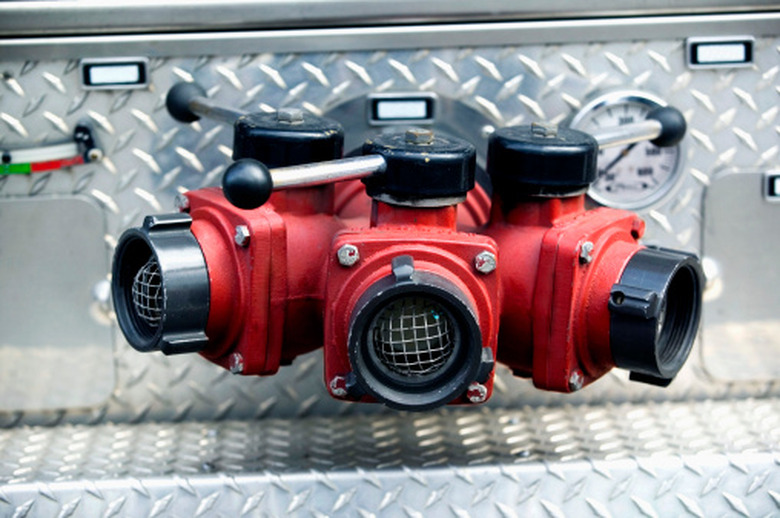Difference Between Standard & Full Port Ball Valves
Ball valves, like gate, globe, and needle valves, are named for the element in them that controls the fluid flow. Ball valves have a spherical flow controller with a cylindrical hole bored in it. When the bore is aligned with the fluid flow the valve is open. Rotating the ball 90 degrees turns off the flow. Ball valves are typically used in on/off applications.
Bore Size
Bore Size
The difference between a standard ball valve and a full-port ball valve is in the size of the ball and bore in relation to the nominal pipe size of the valve. For example, the bore size in a 3/4-inch full-port ball valve is 3/4-inch in diameter, while the bore diameter in a standard ball valve is 1/2-inch in diameter. Ball sizes are in proportion to bore sizes. The 1/2-inch diameter is the nominal size of the next smaller pipe. This is typical. Full-port bore size equals pipe size; standard-port bore size is the next smaller pipe size.
Flow Coefficient
Flow Coefficient
The flow coefficient is a measure of the resistance to flow of a given part of a fluid system. It is used to calculate the length of straight pipe equivalent to an elbow or valve or anything else that affects the flow. The flow coefficient for a full-port ball valve is almost as low as that of straight pipe so it provides minimal resistance to flow and thus creates only a small pressure drop. The standard-port ball valve has a higher flow coefficient and thus causes a larger pressure drop for a given flow.
Applications
Applications
Full-port ball valves are used where their low flow resistance is of value such as on pump suction pipes, where a pressure drop can affect pump performance. They are also used in flows containing mixed liquids and solids where flow restrictions can cause separations in the materials causing buildups and thus reducing the flow in the pipes. Standard-port ball valves are used where pressure drop, turbulence in the flow and material characteristics are not a concern. They also have the advantages of smaller size and lower cost.
Similarities
Similarities
Standard and full-port ball valves have the same design and function in the same way. They are also available, generally, in the same sizes, pressure ratings and materials. The same range of manual, pneumatic and electric actuators are available for both types of valves. Both types can be used to control flow rates although neither are ideal for this purpose. The same types of connections, screwed, flanged, welded and others, are provided on both types of valves.
Cite This Article
MLA
Sampson, Walt. "Difference Between Standard & Full Port Ball Valves" sciencing.com, https://www.sciencing.com/info-8679338-difference-full-port-ball-valves/. 9 January 2018.
APA
Sampson, Walt. (2018, January 9). Difference Between Standard & Full Port Ball Valves. sciencing.com. Retrieved from https://www.sciencing.com/info-8679338-difference-full-port-ball-valves/
Chicago
Sampson, Walt. Difference Between Standard & Full Port Ball Valves last modified March 24, 2022. https://www.sciencing.com/info-8679338-difference-full-port-ball-valves/
